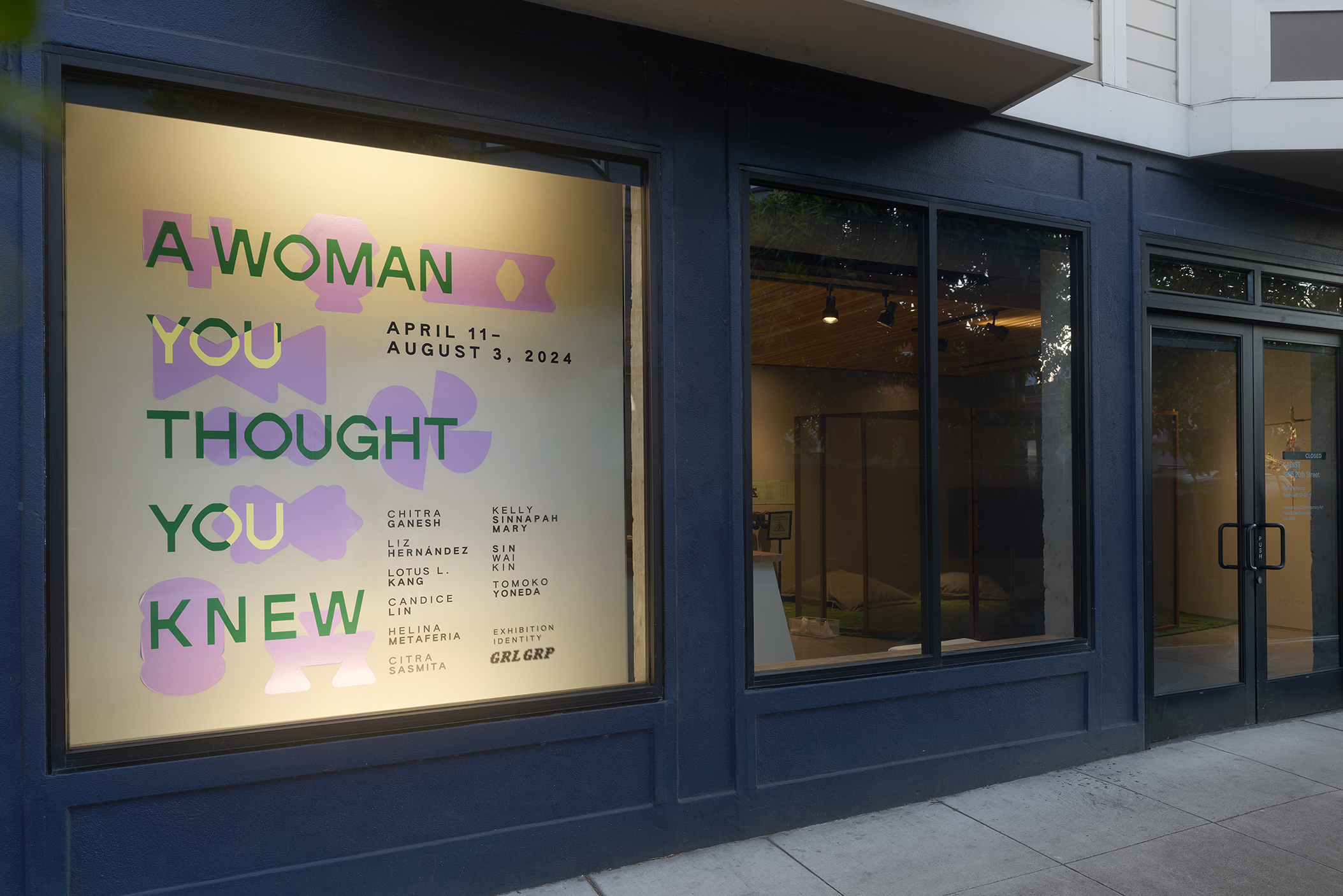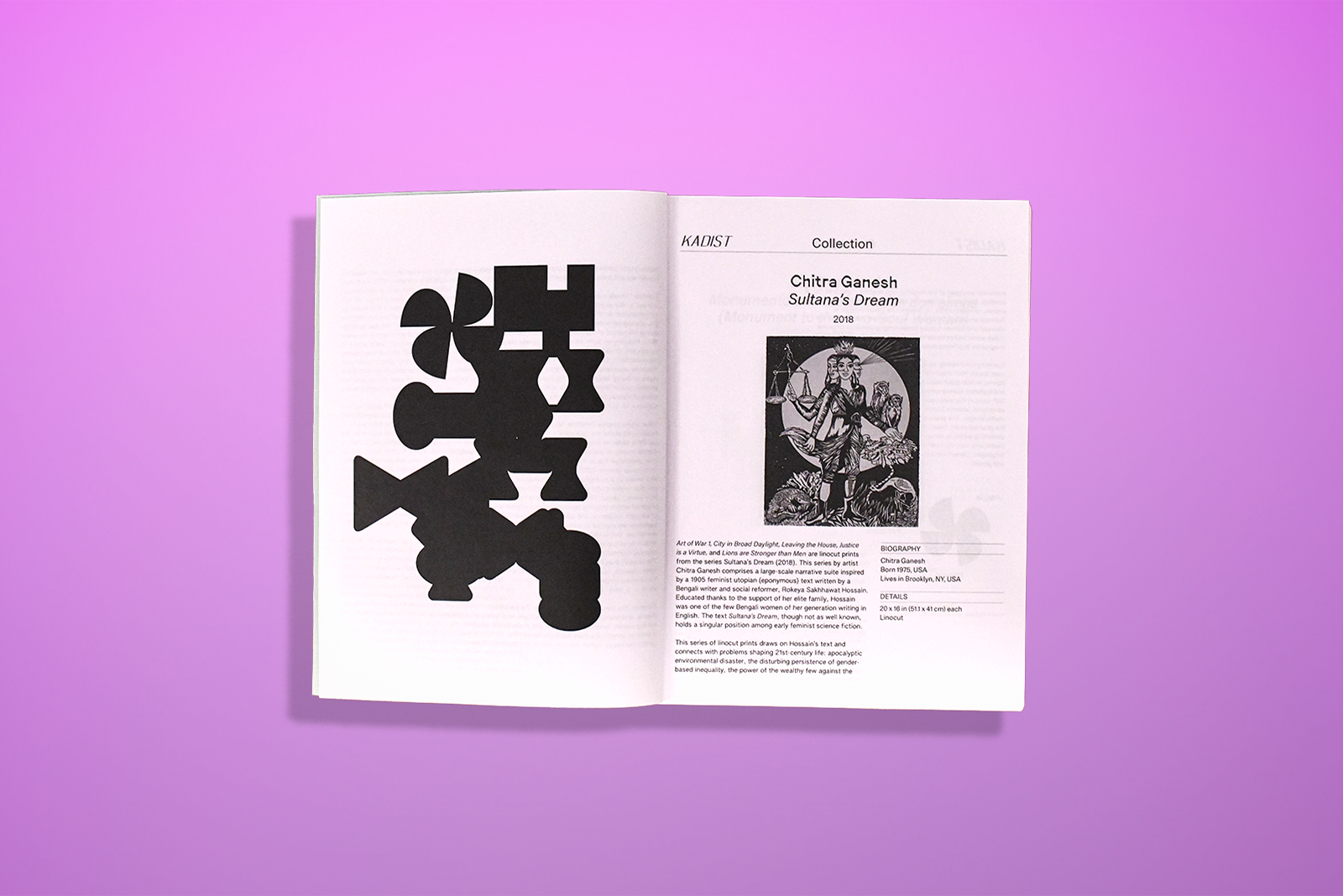





🗯️ EXHIBITION | 💻 DIGITAL |
📖 PRINT
A Woman You Thought You Knew
“A Woman You Thought You Knew brings together works from the KADIST collection that explore world-building as a means to resist, transform, and anchor historical junctures into the contemporary. The works examine intersectional narratives of the construction and deconstruction of gender, womanhood, and femininity, with trans perspectives and the racialized subject. They bring forth overlooked or unwritten stories of women’s role in history, memorializing narratives of women’s labor histories, and dislodging them from conventional records. The exhibition draws from literature and storytelling through accounts of utopia, science fiction, and mythology to underscore feminist perspectives in history and what we can learn from these narratives today to achieve a post-patriarchal future.”
— KADIST, exhibition summary excerpt
Working in a team of designers as part of the design collective GRLGRP, I helped to conceptualize this exhibition identity and implement it across assets for social media, the KADIST website, onsite exhibition graphics, and an informational brochure.
The visual identity of the KADIST exhibition A Woman You Thought You Knew is anchored by a family of icons, where each unique symbol represents one of the artists featured in the show. In creating these icons, GRLGRP protests the ways in which women are stereotyped and objectified, while taking the important step beyond this minimization towards a more expansive and expressive way of communicating the ideas and experiences of women.
The icons were created from a base set of five shapes——rectangle, circle, triangle, hourglass, and diamond——which were derived from simplistic categories that are popularly used to describe the shapes of womens’ bodies. Rejecting these categories, GRLGRP co-opted these shapes and used them to build beyond the objectification they represent by layering, chopping, and combining them into icons that represent some of the ideas and experiences that the artists are exploring in A Woman You Thought You Knew. This process of creative alteration mirrors the ways in which women navigate the world and its oppressive systems: deconstructing and reconstructing inherited notions of gender, womanhood, and feminity.
In order to create the individual icons, GRLGRP started with a few words to describe some of the themes in each artist’s featured works. In acknowledgement of how written language can in itself be oppressive, patriarchal, and insufficient, these words were used as a starting point to explore other visual ways of conveyance that allow for open and creative interpretation.